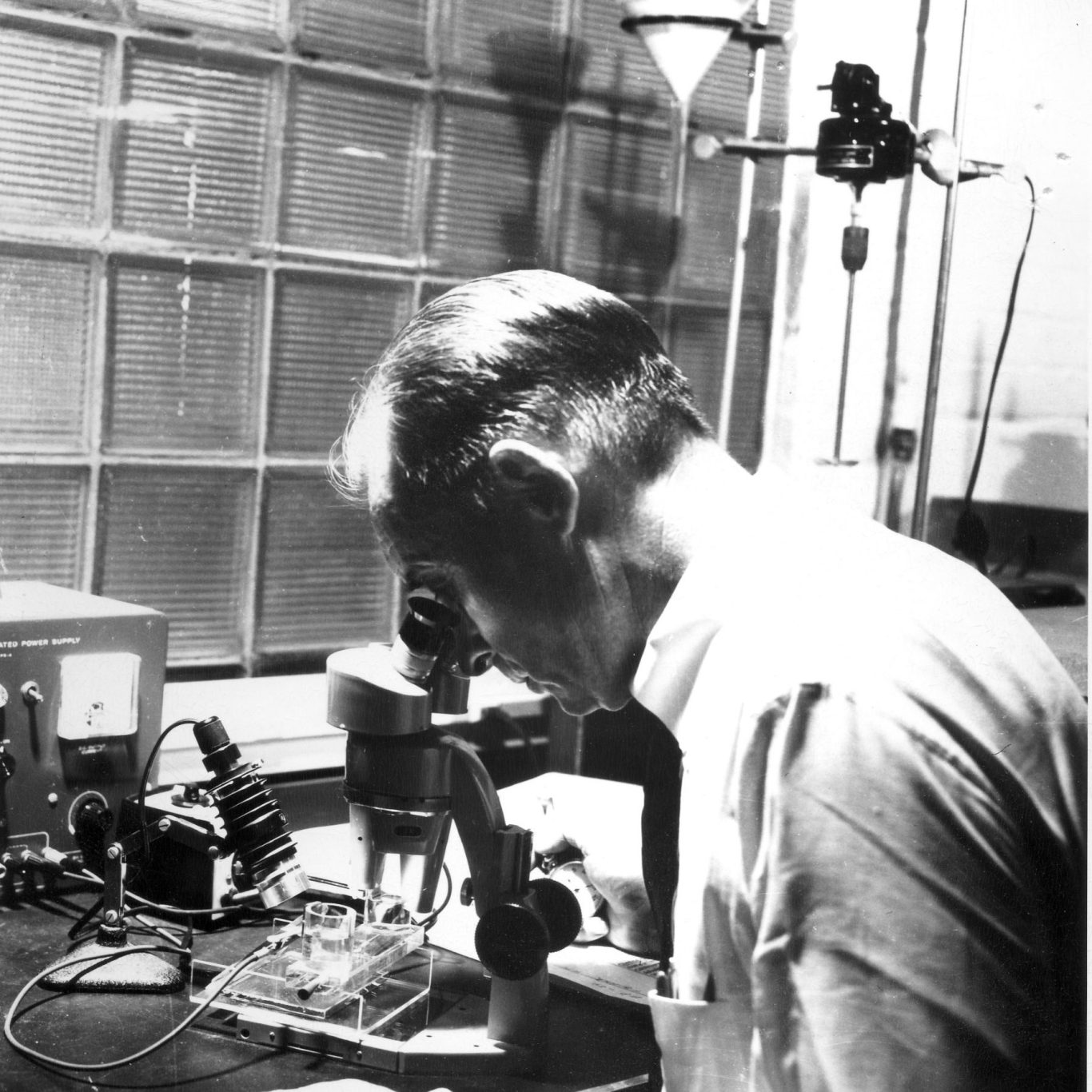About Us

Over 50 years ago Thomas M. Riddick, a consulting engineer and chemist, began an intensive study of the basic principles of colloid stability. Originally, the challenge arose from his observation of the phenomenon exhibited by a natural system: Why could certain river waters be readily coagulated at one season of the year—but with
greatest difficulty at another?
He concluded that the logical avenue of approach to understand coagulation involved zeta potential. He quickly realized that the existing methods for making zeta potential measurements were not very practical, especially in view of the number of determinations necessary to fully explain his observations. Therefore, Mr. Riddick's immediate concern was the development of accurate instrumentation for more facile determination of electrophoretic mobility — from which Zeta Potential values stem. The result was a new design of electrophoresis cell, and a new method of illumination
for viewing and tracking the colloid.
He went on to solve basic coagulation problem in the laboratory and proved his point by successfully incorporating his findings into the design of municipal water treatment plant on the Hudson River — the first ever to operate solely on a basis of zeta potential control. This development was immediately reported by an editor of Chemical Week magazine, who foresaw the application of zeta potential measurements to industrial colloid systems.
Numerous inquiries regarding availability of the instrumentation followed, from industrial and educational organizations here and abroad. As a result of this interest, the name "ZETA-METER" was decided upon, and the manufacturing and marketing organization "Zeta-Meter, Inc." was formed.
Before Thomas Riddick became involved with the world of Zeta Potential he established the civil engineering firm of Riddick Associates, specializing in water treatment, wastewater treatment and associated facilities. He had a reputation in the field of coming up with practical, innovative solutions to engineering problems. In fact he held several patents in the field and authored numerous technical papers. Louis Ravina joined Riddick Associates in 1965, fresh out of graduate school with a master’s degree in environmental engineering. During his first three years with the firm he also held a position as a Visiting Lecturer in the Environmental Engineering graduate program at Manhattan College, in Riverdale, New York.
His early years at Riddick Associates provided him with a strong background in the practical arts of engineering and construction. This greatly enhanced his acknowledged academic abilities. In fact, his broad range of interests and his exceptional engineering abilities were quickly recognized. As a result he was invited to become a principal in the firm as soon as he earned his professional engineers license.
Thomas Riddick introduced Louis to the world of zeta potential. Then, for many years, Louis assisted at times with the technical aspects of the Zeta-Meter company. As a result, he became very familiar with the operating principles of zeta potential
measurement. He also conducted laboratory experiments which were included in a well respected book on the subject authored by Thomas Riddick, and titled Control of Colloid Stability through Zeta Potential.
When Thomas Riddick unexpectedly passed away, Louis was able to assist in the operation of the company. Many years later he purchased Zeta-Meter, Inc. from the heirs of Thomas Riddick. During his tenure as the head of Zeta-Meter, Louis shepherded the company through several redesigns of the instrument. In each case, he retained all of the essential design features created by Thomas Riddick, that made the instrument simple, practical and reliable. Louis focused his efforts on improving and updating the electronics, and on making the operation of the instrument more fool proof and more user friendly. Under his leadership Zeta-Meter established a reputation for unlimited customer support – something that is certainly a rarity, and which continues to this day.
In 2015, Louis sold the business to husband & wife, Jeffery and Sjaan Armentrout. The Armentrouts moved the business to Harrisonburg, VA, where their expertise in manufacturing and quality customer service continued the standard previously upheld by the owners.
